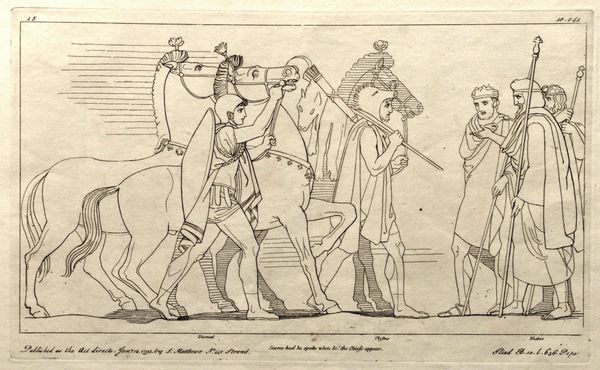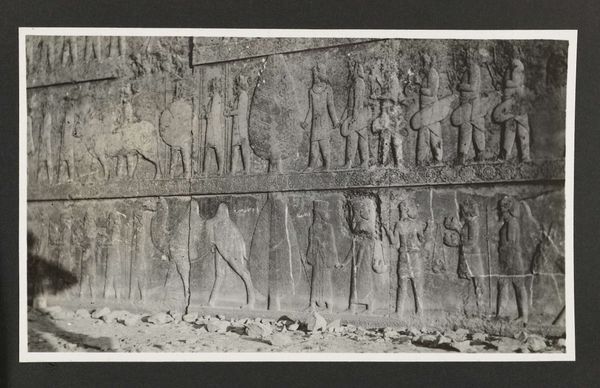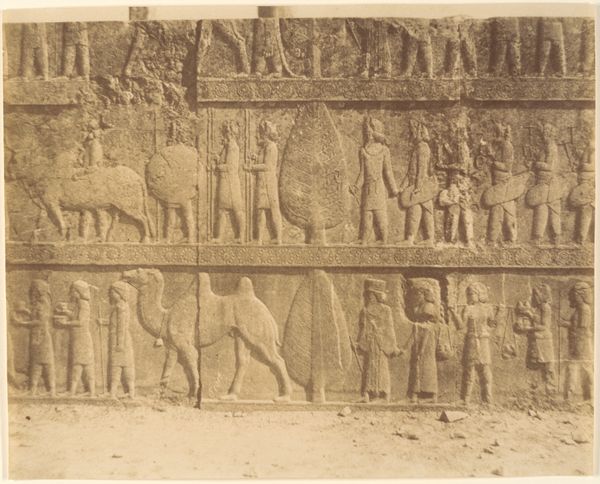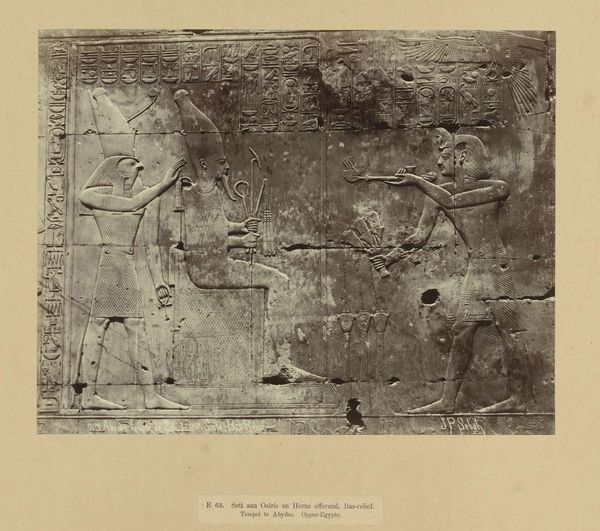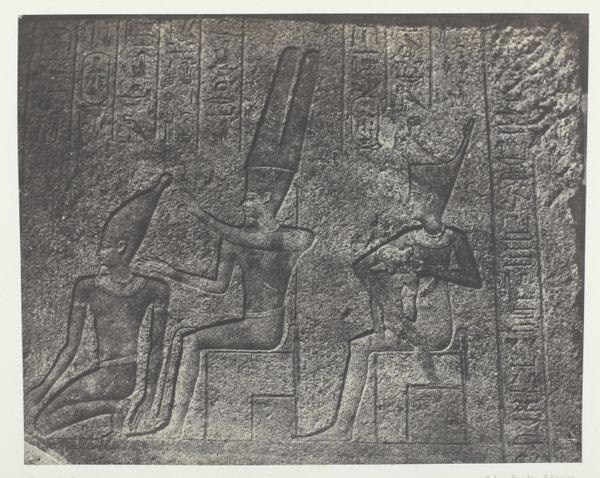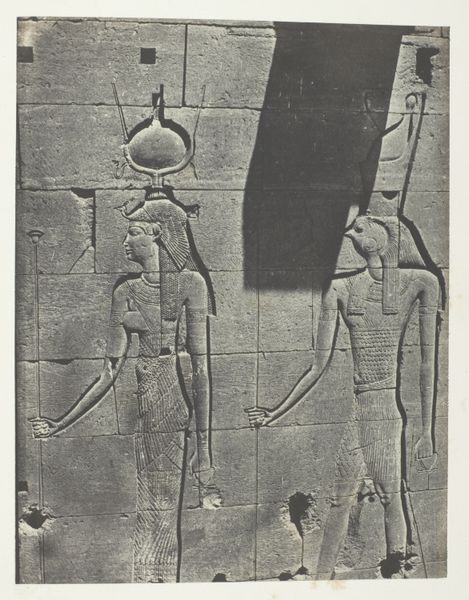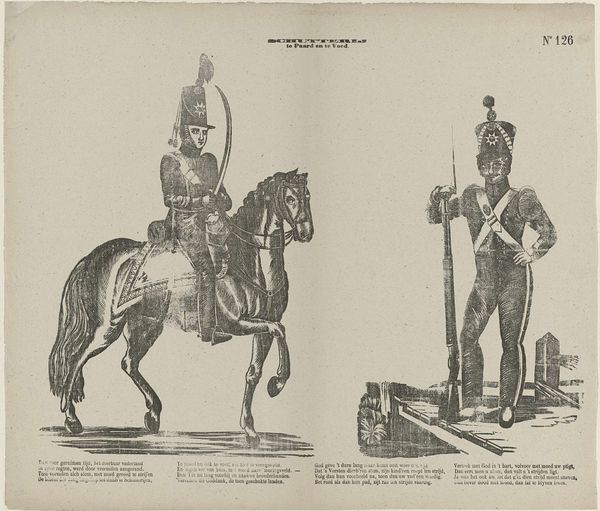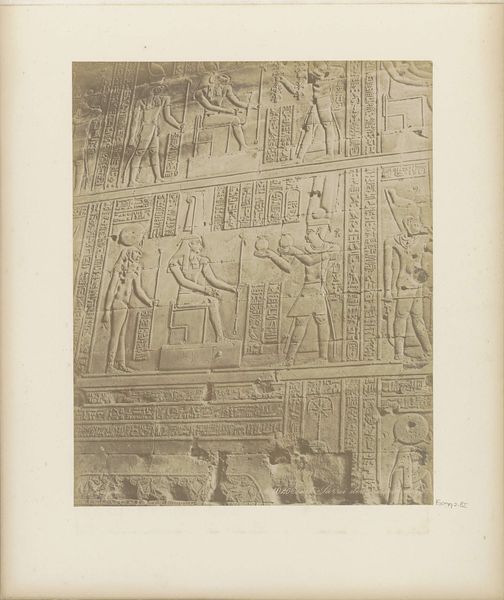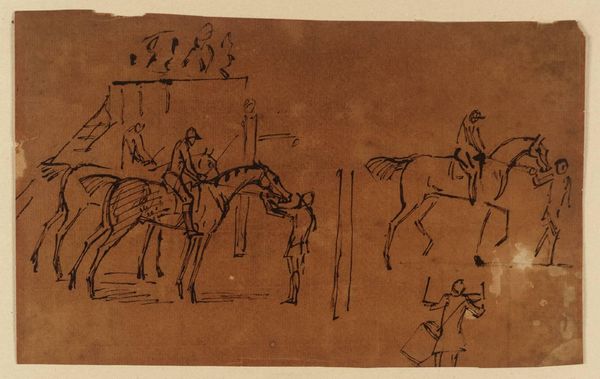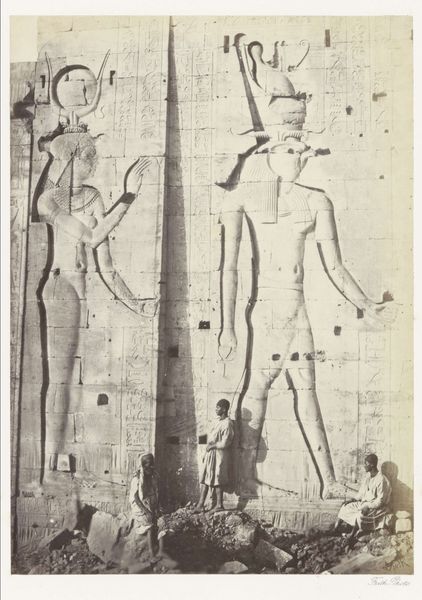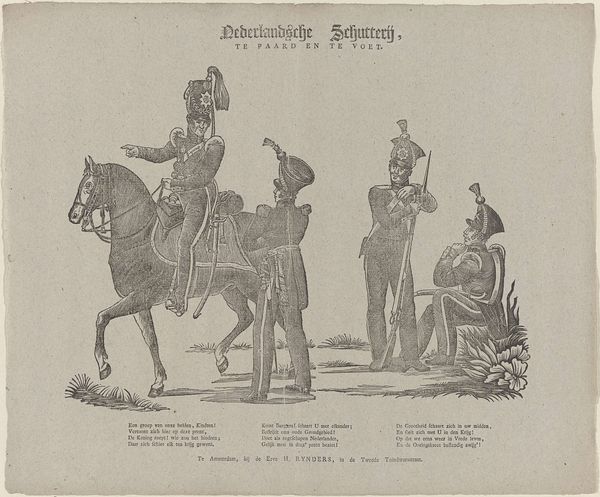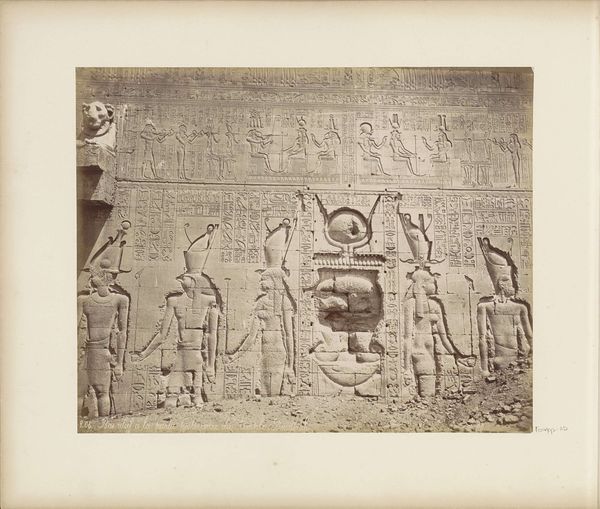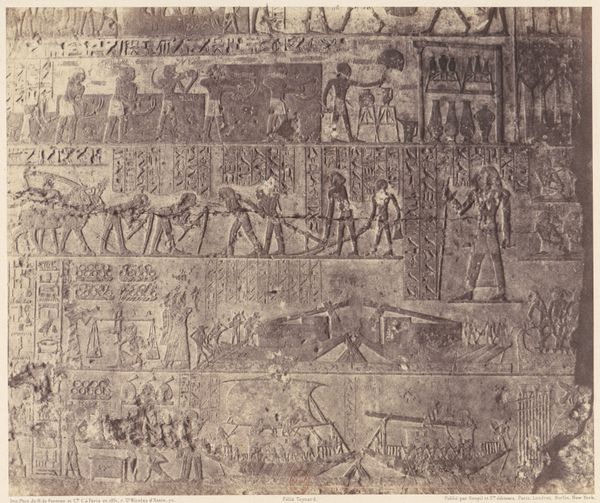
drawing, lithograph, print, ink
#
drawing
#
lithograph
# print
#
caricature
#
ink
#
romanticism
#
genre-painting
#
history-painting
#
realism
Copyright: National Gallery of Art: CC0 1.0
Curator: This lithograph, titled "Bas-relief en pain d'épices…", from around the 19th century by Honoré Daumier, depicts a rather… let's say *stylized* procession. What’s your immediate take? Editor: Comical! I can’t help but chuckle. There's something wonderfully absurd about rendering a military triumph as if it were carved into gingerbread. It subverts the grandiose nature of the event right from the start. Curator: Absolutely. Gingerbread—or "pain d'épices"—figures prominently in French culture, and in creating a scene fit for a child's fable. The inscription references the intention "to pass on to posterity the most distant memory" of General Léon Faucher's entrance into Reims. Editor: That is drenched in sarcasm! Considering Daumier's history, I’d bet this “triumphal entry” was anything but. This almost reads as protest. I see Daumier is critiquing how history is presented, monumentalized, and potentially fabricated to create heroes. Curator: Indeed, there is an undercurrent of pointed social commentary. Consider how Daumier, rooted in Romanticism but transitioning into Realism, used caricature throughout his career to skewer political figures. Here, the exaggerated features—the noses, the stiff posture, especially of the horses—diminish the subjects. What emotional reading of that style do you propose? Editor: They look like clockwork toys – stiff, repetitive, lacking genuine power. The scene lacks depth and humanity, amplifying a critique of authoritarian figures as emotionally stunted or disconnected from their people. Note how even the bas-relief aesthetic contributes; reducing everything to simplified, easily reproducible forms aligns with that critique. Power can seem manufactured, stage-managed, lacking genuine support. Curator: It does underscore the manufactured nature of such events. In essence, Daumier delivers a potent message using easily understood, even playful visual tropes. I think of cultural memory: that's also the cultural task to question power! Editor: It’s like he anticipated how images shape perception and manipulated it accordingly. This lithograph transcends being just art. I appreciate how such artwork provides lessons to us still today! Curator: A perfect summation. It compels one to scrutinize power dynamics with humor and, of course, to resist historical narratives without evidence.
Comments
No comments
Be the first to comment and join the conversation on the ultimate creative platform.
